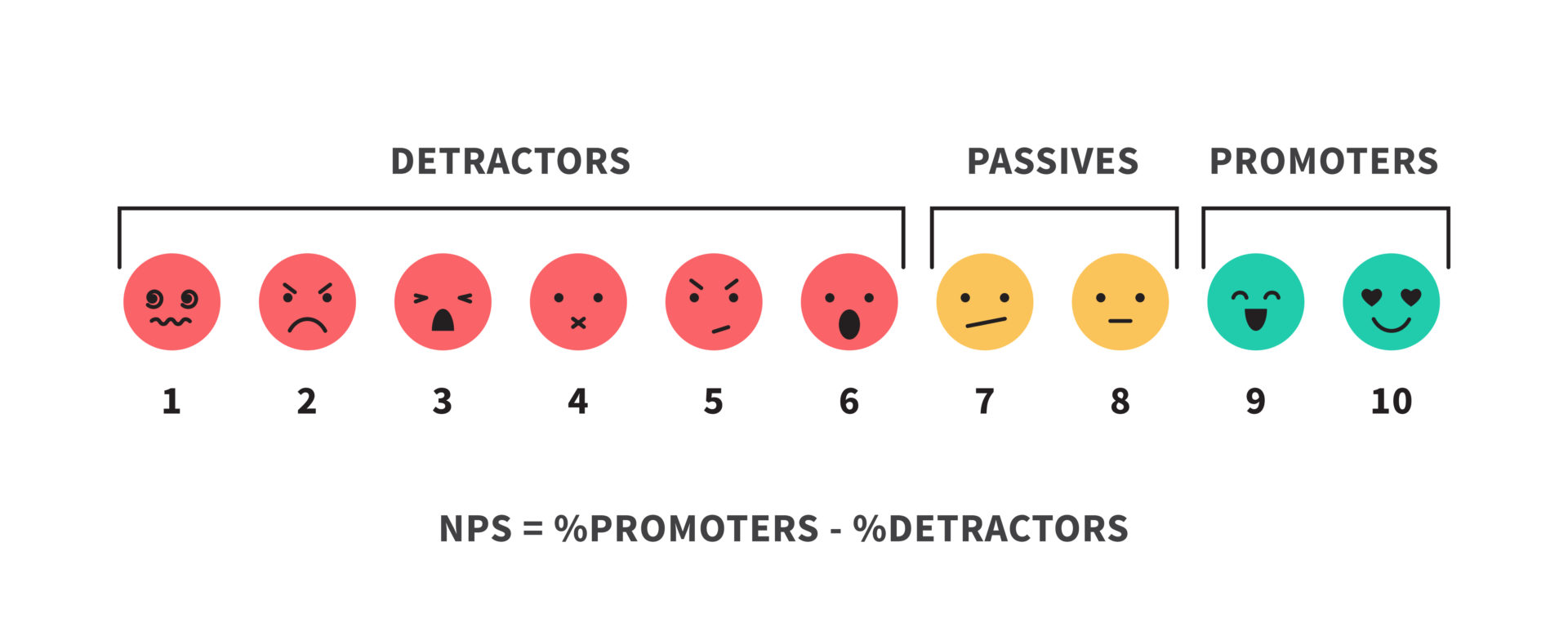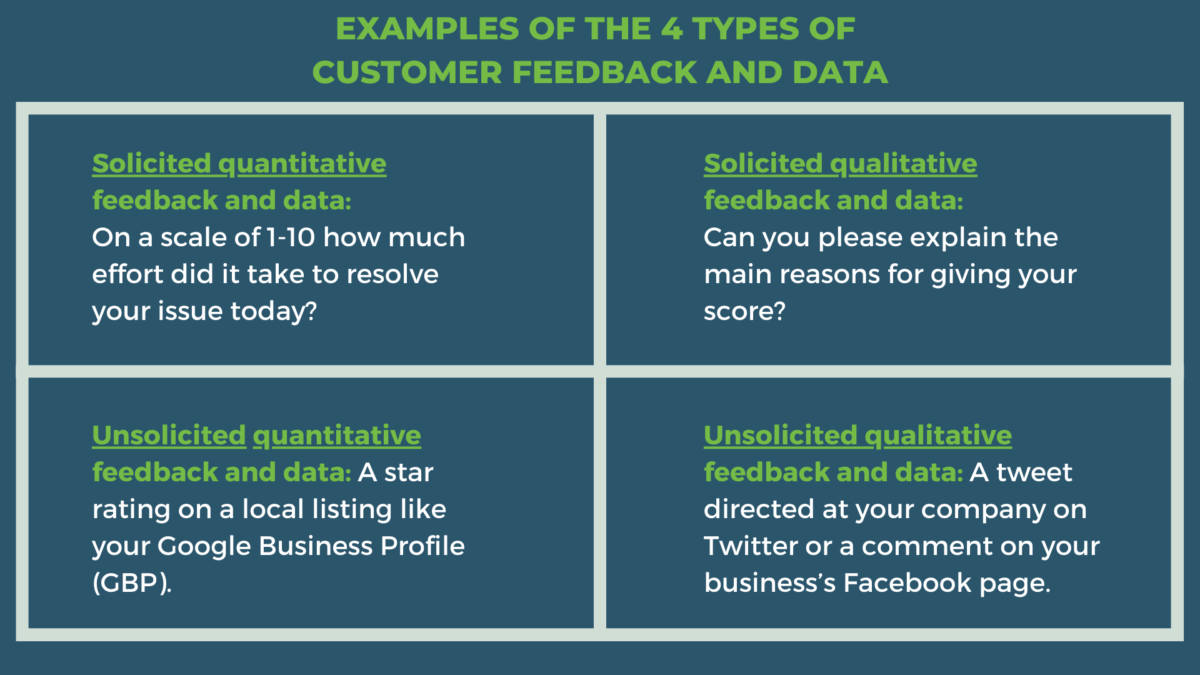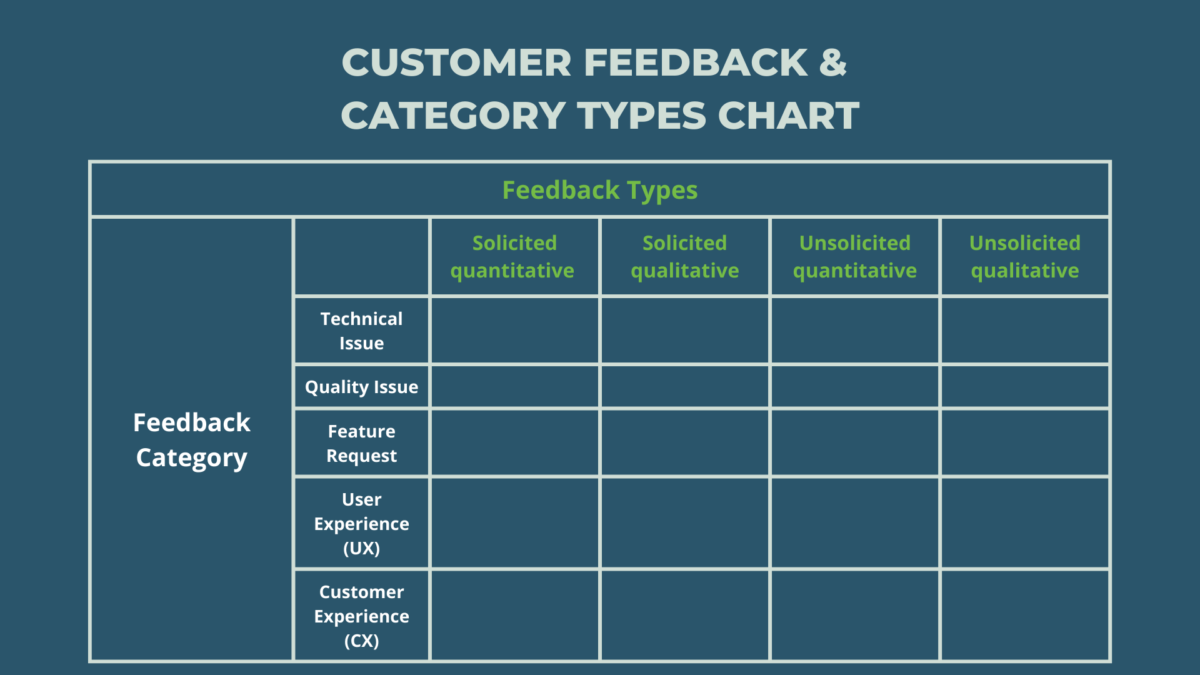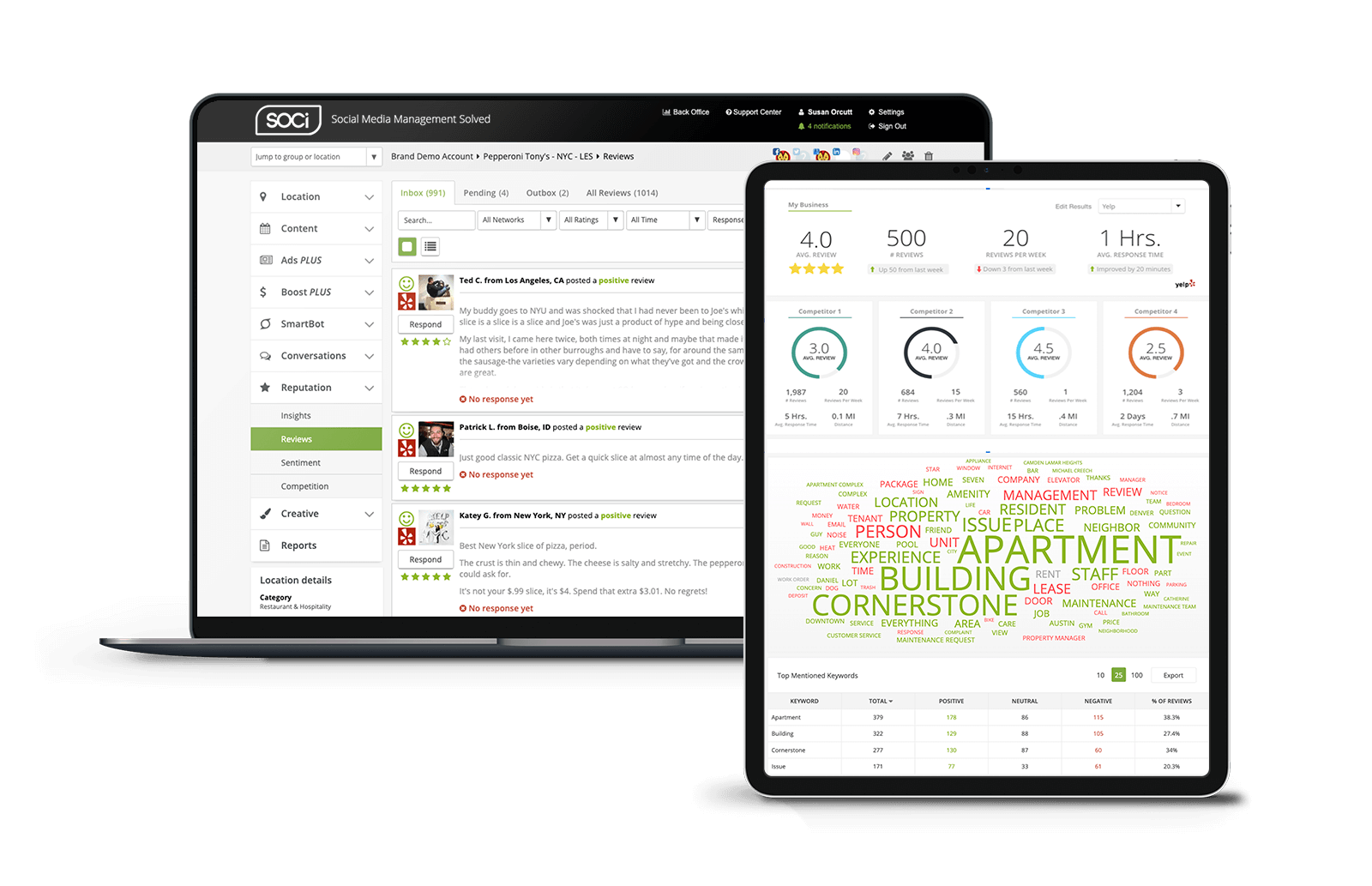How Negative Reviews Impact Your Business (and How to Fix Them Fast)
How to Have the Best-In-Class Customer Feedback Management System

How to Have the Best-In-Class Customer Feedback Management System
As a multi-location business, you care what your customers think! That’s where customer feedback comes in. Customer feedback is quantitative or qualitative data collected from your customers that you can turn into actionable insights to improve your products and services.
There’s often a lot of data to sift through. So, how do you handle and prioritize all of this feedback and data? You need a robust customer feedback management system in place.
Managing your customer feedback helps retain clients and reduce churn. Customers who report having a positive experience at a business are 140 percent more likely to spend than those who report having a negative experience.
In this blog, we’ll further define customer feedback management and its importance. We also provide five essential strategies to improve your customer feedback management system.
What is Customer Feedback Management?
Customer feedback management is the process of collecting customer feedback from multiple channels and organizing it into actionable insights to improve your products and services.
As we noted previously, customer feedback is a pillar of any business. Beyond giving you customer insight, this feedback also impacts current and potential consumers’ perceptions of your business.
Not convinced? Here are a few facts:
- Nearly 9 in 10 consumers globally check online reviews before making a purchase.
- More than three-quarters of consumers who leave critical reviews expect a business to respond to them.
- Forty percent of those consumers expect a response within 24 hours after leaving the review.
- Increasing customer retention by just five percent can boost profits by more than 25 percent.
With customer feedback, you can also improve your customer experience marketing and sales strategies, which help you win head-to-head battles against competitors.
Now that you know the basics, let’s dive into how to implement a successful customer feedback management system.
Customer Feedback Management Strategies
Below are five tactics to implement into your customer feedback management system and help you make more informed business decisions.
1. Determine Your Objectives and Set a Feedback Schedule
In an ideal world, you’d know what every customer is thinking or saying about your business, and you’d be able to manage all of that data successfully. That’s not typically the case, though. To start, zero in on which customer feedback matters most and how you’ll collect that information.
Humans naturally like schedules or patterns. When thinking about how to collect your feedback, you should consider sticking to a specific schedule based on touch points. This will give you cleaner and more accurate data, and these requests won’t feel random to customers, which could be off-putting.
For instance, you might send a customer satisfaction (CSAT) survey after a consumer interacts with a chatbot or after a call with a customer service agent. Similarly, you can send net promoter score (NPS) surveys on a set schedule — a week, a month, and six months after someone becomes a client or purchases a product.
CSAT surveys often ask questions like, “On a scale of 1-10, ten being the most, how satisfied were you with our product?” NPS surveys are always a slight variation of this question: “How likely are you to recommend [Organization X] to a colleague or friend?” with the option to select a number and emoji that best represents their feeling, as seen below.
 Image of NPS scale and formula promotion, courtesy Voin_Sveta at Shutterstock
Image of NPS scale and formula promotion, courtesy Voin_Sveta at Shutterstock
For more information on these different survey types, read our customer advocacy KPIs article.
2. Collect Omnichannel Feedback
When businesses consider customer feedback, solicited feedback such as surveys comes to mind. That’s not always the case. Feedback can come in many forms across multiple channels, known as omnichannel feedback.
Omnichannel feedback can come from not only surveys and phone calls but also social media platforms, online forums, PR releases, review sites, star ratings and reviews on local listings like Google Business Profiles (GBP) or Yelp.
Regardless of where the customer feedback originates from, it’s important to know how to categorize it and understand what type of data it is. Below are the two types of feedback and two types of data.
Solicited vs. Unsolicited Feedback
Solicited feedback is requested by a company and often comes in the form of a survey sent via email, chatbot, or phone call.
Unsolicited feedback is not requested by a business. It’s given freely by consumers. You’ll find unsolicited feedback from review sites, social media comments, online forums, app stores, and other online brand mentions.
Both solicited and unsolicited feedback are necessary to collect and monitor. You have more control over your solicited feedback, but unsolicited feedback often reveals either significant customer pain points or positive interactions with your business and brand.
Now that you understand the difference between solicited and unsolicited feedback, let’s discuss quantitative and qualitative data.
Quantitative vs. Qualitative data
Quantitative data comes in numerical form and measures values, counts, or differences. Quantitative data helps you answer questions about how many, how often, or how much.
Qualitative data is often language-based feedback or insights. Qualitative data helps businesses better understand the who, what, and why of specific customer behaviors and their feelings.
Both quantitative and qualitative data can appear in solicited and unsolicited feedback. Here are some examples:

It’s challenging to manage omnichannel customer feedback without the right software and tools. More on that later.
3. Organize Feedback by Category
We discussed the four main feedback types: solicited-quantitative, solicited-qualitative, unsolicited-quantitative, and unsolicited-qualitative customer feedback. Now, let’s look at how to categorize the feedback collected across multiple channels.
Product Feedback
Product feedback deals directly with your products. There are three main product issues: technical issues, quality issues, and feature requests.
Technical Issues:
These are often software bugs or server and submission form issues.
For instance, If you’re a property management company and renters can’t pay their rent due to a bug in the online payment portal, you have a significant technical issue and need to resolve it immediately.
Quality Issues:
Another type of product feedback is when products don’t meet company standards or customers’ expectations. For example, if you’re a burger joint, a diner’s complaint about burnt fries would be considered a quality issue.
Feature Requests:
Clients often provide feature requests via surveys, chat, or email. They’re typically low priority but are valuable and can help with product development.
An example would be a customer suggesting your business creates an interactive map with your store locator.
Service Feedback
In general, service feedback can be split into two buckets: User Experience or Customer Experience feedback. Let’s explain the difference between the two.
User Experience (UX):
UX is how a user interacts with your products or services, particularly in terms of ease. For instance, if you’re a retail chain, can customers effortlessly checkout in your store without having to wait in long lines or track down a retail associate?
Similarly, is the online checkout process quick and seamless? Does it take only a few clicks to purchase an item?
Customer Experience (CX):
According to recent research, 8 in 10 consumers have switched brands because of poor CX. It’s essential to understand and look to improve your CX. Gathering CX feedback is the easiest way to begin.
CX is how customers feel about or perceive your company throughout the relationship with your brand. Each interaction clients have with your business impacts their CX. You can improve your business’s CX by:
- Creating an inviting online brand experience (website, social media, local listings)
- Generating customer satisfaction throughout the buyer’s journey
- Allowing for an easy feedback loop where customers’ questions, concerns, and other pain points are quickly addressed and followed up on
It’s important to understand these different feedback categories. You’ll be better equipped to organize your data, resolve issues, and analyze customer feedback trends by naming and categorizing them.
4. How to Organize and Prioritize Feedback
We’ve discussed the four types of feedback: solicited and unsolicited mixed with quantitative and qualitative feedback; we’ve also noted the different feedback categories.
Now, it’s time to organize and prioritize this customer feedback, arguably the most critical step in customer feedback management.
We recommended first organizing your customer feedback by the four feedback types and categories, like in the table below:

You can use Excel or Google Sheets to achieve this, but it’ll be time-consuming. We recommend using automation software and tools to achieve this step.
After you’ve categorized your customer feedback, it’s time to prioritize it.
High-priority feedback and issues are often:
- Bugs or product issues that are affecting a large portion of customers
- An issue that affects loyal or high-valued clients
- Issues that will likely result in a recall or major loss in profit if not resolved
Low-priority feedback and issues are often:
- An individual bug affecting only one or a few customers
- General inquiries about a product and partnership or sponsorship requests
- Feature requests
5. How to Turn Feedback Into Results
Now that you’ve collected, organized, and prioritized your feedback, it’s time to take action! This is the fun part of customer feedback management. Below are two different areas of focus.
Address Feedback and Close the Feedback Loop
First, you want to address your high-priority feedback and issues. This is an ongoing process as new high-ticket issues arise. However, as you address these issues, they should dwindle in weight and frequency.
You must follow up with customers who leave both solicited and unsolicited feedback, closing the feedback loop. This makes clients feel heard and valued as their issues are resolved.
Responding to public criticism, such negative reviews, also improves your brand’s reputation. For details on responding to reviews, download The Multi-Location Marketer’s Guide to Online Reputation Management.
Analyze Trends and Sentiments
Another critical step is to analyze the trends and sentiments from your customer feedback. Organizing feedback by type and category helps, but having software like SOCi Reviews with sentiment analysis capabilities allows you to understand shifts in online reputation over time.

You should leverage these sentiment analysis insights to influence and make adjustments to your CX and UX. It’s also important to share customer feedback outside of your customer support department such as marketing, sales, and finance. Customers will begin to notice if your business is making optimizations based on commonly left feedback!
Customer Feedback Management Tools for Multi-Location Businesses
If you’re a multi-location business, you have even more customer feedback than most businesses to manage. Customer feedback can come from 100s or 1,000s locations across the nation and from multiple channels such as social media, directories, local listings, and elsewhere.
To successfully manage this customer feedback, you need software built for multi-location businesses. This is where SOCi can help. SOCi is the marketing platform for multi-location businesses.
We mentioned SOCi Reviews earlier, which has review tracking and sentiment analysis capabilities to help you quickly respond to online reviews and measure trends. For more information on how SOCi’s Reviews and Listening products can help improve your customer feedback management, request a demo today!






